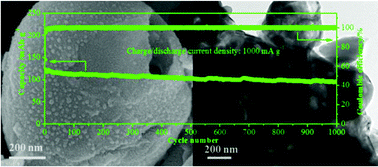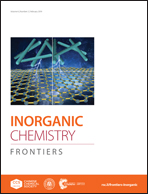Porous NaV3(PO4)3/C nanocomposite anode with superior Na-storage performance for sodium-ion batteries†
Abstract
As an anode material for rechargeable sodium-ion batteries, polyanionic vanadium-based orthophosphate (NaV3(PO4)3) has several advantages such as good thermal stability, robust structural framework and high specific capacity. However, pristine NaV3(PO4)3 suffers from sluggish reaction kinetics caused by low electron conductivity. Herein, porous NaV3(PO4)3/C nanocomposites were synthesized using a facile solid-phase reaction approach, in which graphene oxides were introduced as reductants and carbon sources and their amounts were primarily optimized to balance their competitive roles. The resultant product was composed of thin-layer carbon-coated NaV3(PO4)3 particles wrapped in a conductive carbon matrix. Furthermore, electrochemical behavior, charge/discharge performance and reaction kinetics were carefully investigated using cyclic voltammetry, galvanostatic technique and electrochemical impedance spectroscopy. The experimental results indicated that the material can achieve excellent high-rate capability with high reversible capacities of 150 mA h g−1 at 50 mA g−1, 127 mA h g−1 at 500 mA g−1, and 108 mA h g−1 at 2000 mA g−1 due to the fast reaction kinetics characterized with small interfacial impedance and charge-transfer impedance. In addition, it exhibited improved cycling performance with capacity retention of 84% after 200 cycles at a current density of 200 mA g−1.



 Please wait while we load your content...
Please wait while we load your content...